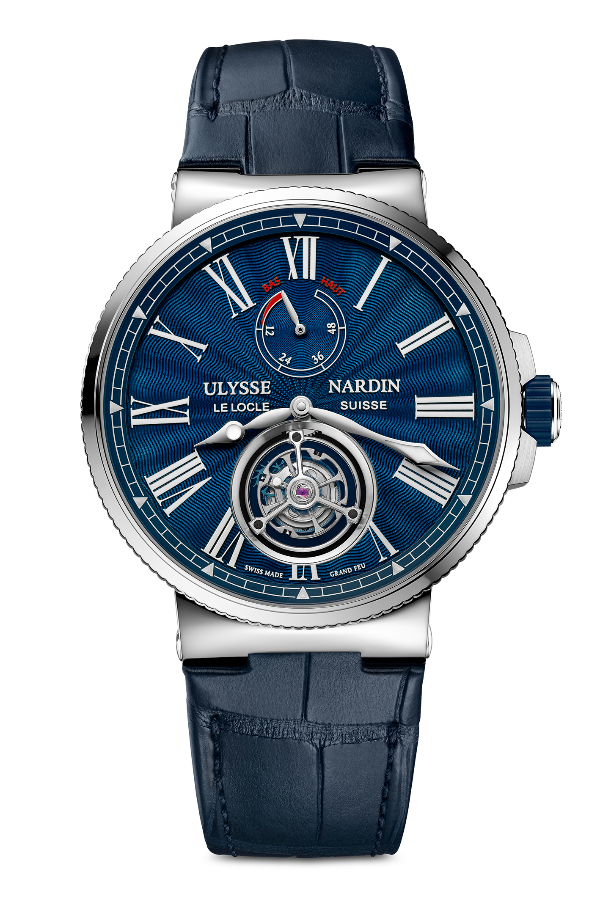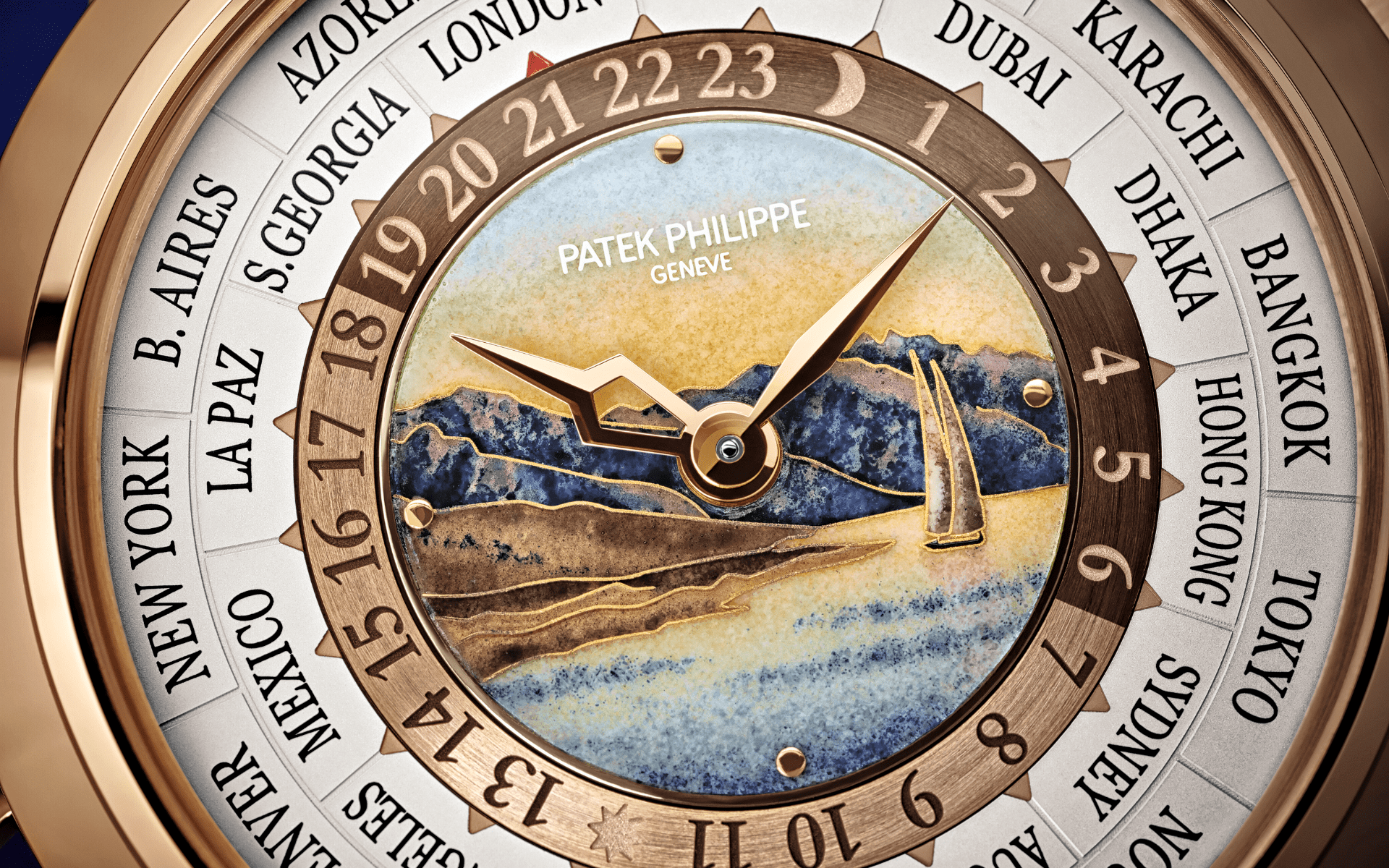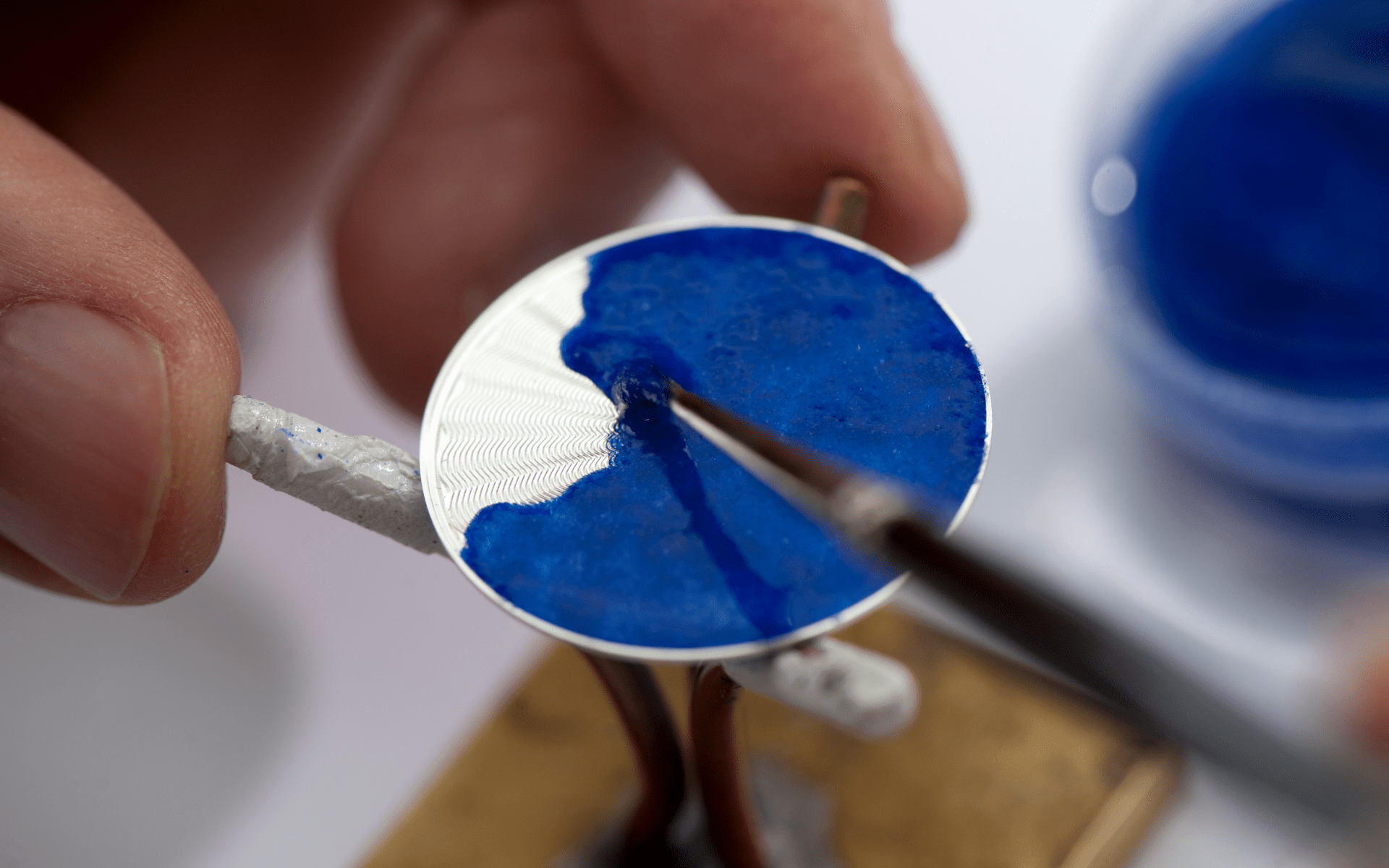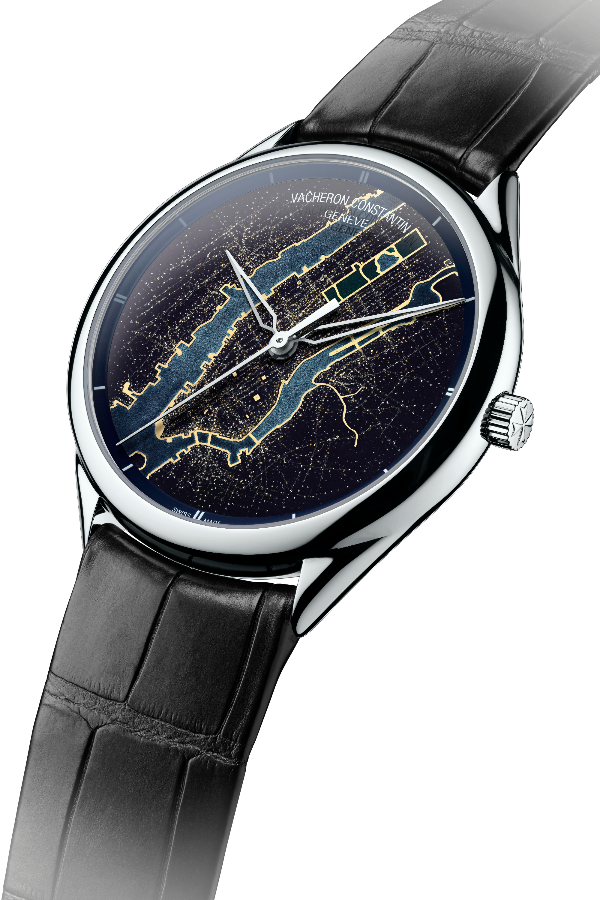
Grand feu
Perhaps the most commonly used technique, grand feu is no less tricky to execute. Meaning “great fire” in French, grand feu involves coating a metal disc with enamel a few times. Between each coating, the enamel is fired up the enamel at temperatures of 800°C - 900°C. This process is repeated a few times to achieve the desired motifs, colours, and depth.
Another difficulty of the process is that due to its susceptibility to external environment such as humidity and weather, not all enamel will come out perfect. In fact, most will suffer from blemishes and bubbles, and have to be discarded.
A fine example of this technique is Ulysse Nardin Marine Tourbillon Blue Grand Feu. The dial boasts a combination of two traditional watch decorative techniques – guilloche finished with deep oceanic blue grand feu enamel, one of the toughest colours – not to mention one of the prettiest – to achieve for enamel.
Also see: Jaeger-LeCoultre Reverso Tribute Enamel timepieces


